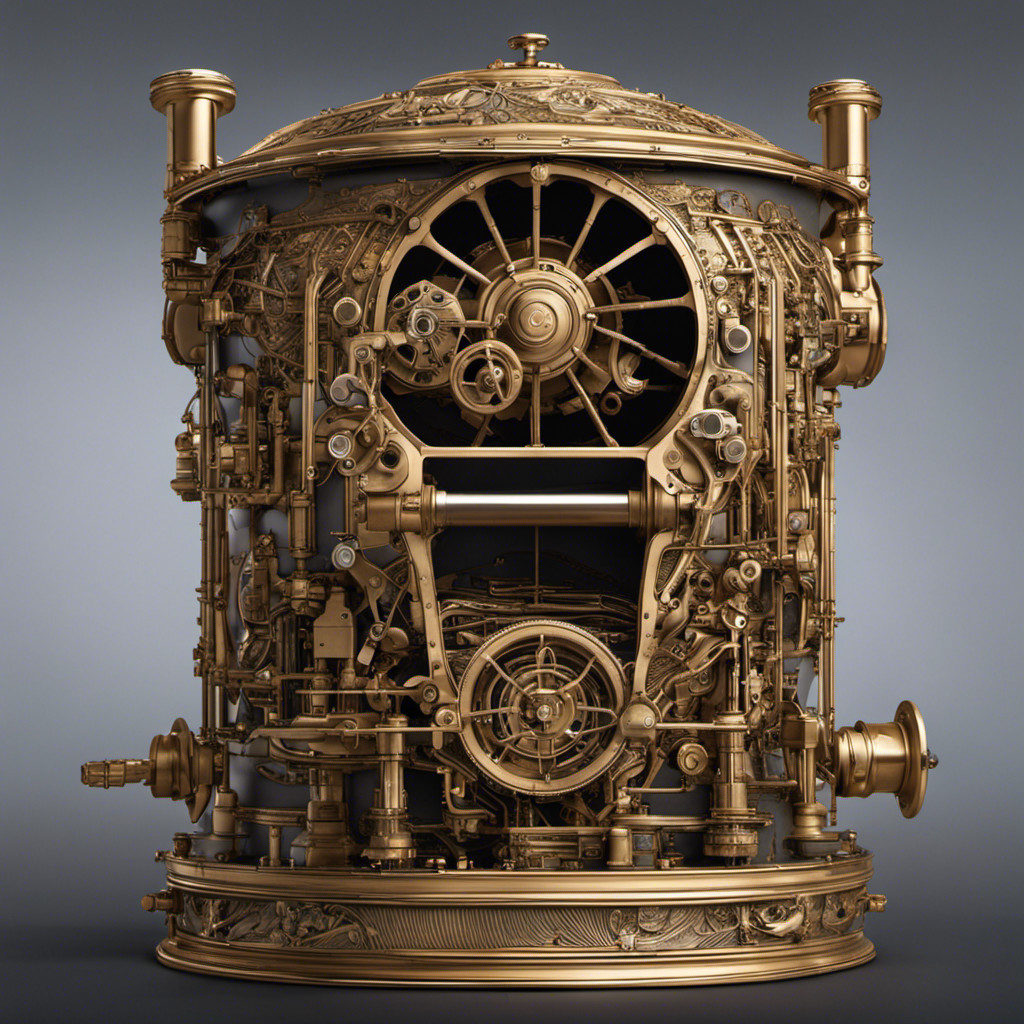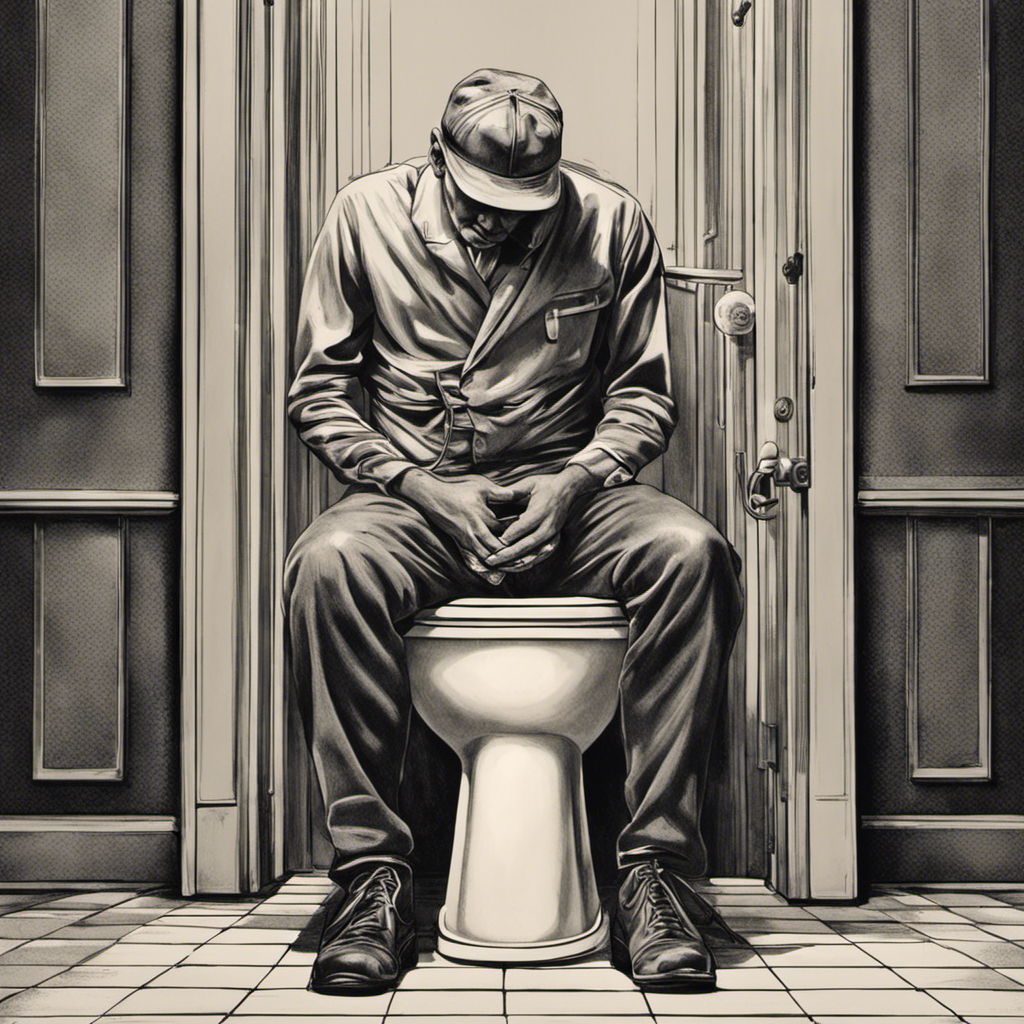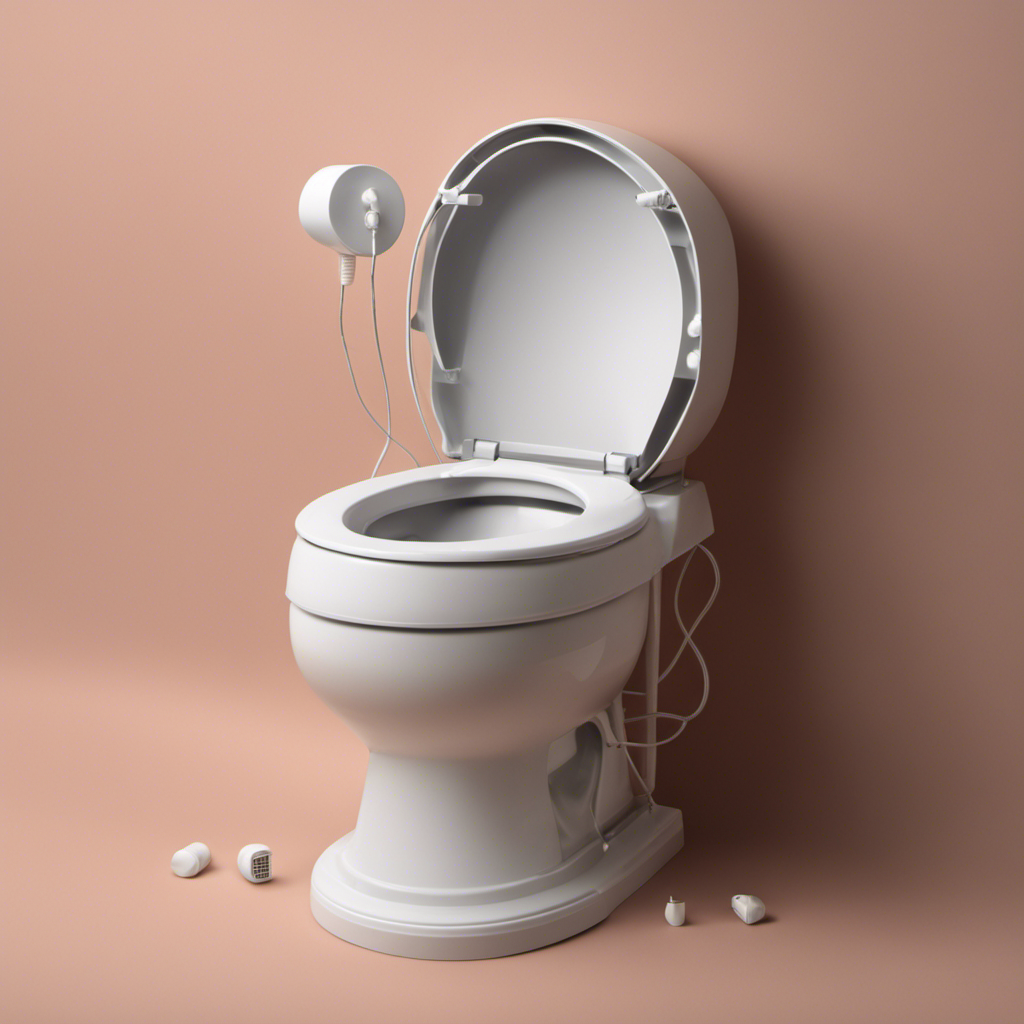Have you ever been awakened in the middle of the night by the incessant sound of a running toilet? It can be both frustrating and perplexing.
In this article, I will delve into the common causes of a running toilet and provide you with the knowledge and steps to troubleshoot and repair this annoying problem.
Let’s put an end to the never-ending running water and regain the peace and quiet we all deserve.
Key Takeaways
- A faulty flapper valve is a common cause of a running toilet.
- Regular maintenance of the flapper valve is important to prevent issues.
- Troubleshooting a faulty fill valve can help address the problem.
- Leaky toilet tank bolts can also contribute to a running toilet.
Common Causes of a Running Toilet
One of the most common causes of a running toilet is a faulty flapper valve. The flapper valve is responsible for controlling the flow of water from the tank into the bowl. When the flapper valve is not working properly, it can lead to a continuous flow of water, causing the toilet to run. This can result in wasted water and increased water bills.
To understand why the flapper valve malfunctions, it’s important to consider factors such as toilet water pressure and toilet overflow prevention. By understanding these factors, we can identify the specific issues that may be causing the flapper valve to fail and take the necessary steps to fix it.
Now let’s delve into the details of understanding the flapper valve.
Understanding the Flapper Valve
To understand why your toilet won’t stop running, you should become familiar with the flapper valve. This small but crucial part is responsible for regulating the flow of water from the tank into the bowl.
Here are some key points about flapper valve maintenance and signs of a malfunctioning flapper valve:
-
Flapper valve maintenance:
-
Regularly inspect the flapper valve for any signs of wear or damage.
-
Clean the flapper valve and the surrounding area to prevent debris buildup.
-
Adjust the chain length to ensure proper seal and prevent leaks.
-
Replace the flapper valve if it becomes warped or cracked.
-
Consider using a flapper valve with a chlorine-resistant material for longevity.
-
Signs of a malfunctioning flapper valve:
-
Continuous running water sound even when the toilet is not in use.
-
Frequent need for tank refills.
-
Water leaking into the bowl from the tank.
How a Faulty Fill Valve Can Cause a Running Toilet
A faulty fill valve can cause a toilet to keep running. This is a common problem that many people face, but it can be easily resolved with some troubleshooting and the replacement of fill valve components. When the fill valve malfunctions, it fails to shut off the water flow properly, resulting in constant running water in the toilet tank. To help you understand this issue better, let’s take a look at the table below:
| Fill Valve Issue | Troubleshooting Steps | Replacing Components |
|---|---|---|
| Water keeps running | Check the float height | Replace the float |
| Water is too low | Adjust the water level | Replace the fill valve |
| Water is overflowing | Check for blockages | Replace the valve seat |
Fixing Leaky Toilet Tank Bolts
Check if the toilet tank bolts are leaking by feeling for any moisture around the base of the bolts. If you notice any dampness, it could indicate a leak in the tank bolts.
To fix this issue, follow these steps:
- Turn off the water supply to the toilet.
- Use a wrench to loosen the nuts on the bolts.
- Remove the bolts and inspect them for any cracks or damage.
- Replace the bolts if necessary.
- Reinstall the bolts and tighten the nuts securely.
By addressing a leaky toilet tank bolts promptly, you can prevent water wastage and potential damage to your bathroom.
Adjusting the water level in the toilet tank is another essential step to ensure efficient flushing while minimizing water consumption. Use the toilet tank’s water level adjustment mechanism to set the water level to the appropriate height, typically indicated by a mark on the inside of the tank.
Steps to Troubleshoot and Repair a Running Toilet
Turn off the water supply to prevent further water wastage and potential damage to your bathroom.
If your toilet keeps running, it could be due to a toilet tank overflow or an issue with the water level. To troubleshoot and repair a running toilet, follow these steps.
First, lift the toilet tank lid and check if the water level is too high. If it is, adjust the water level by turning the adjustment screw or bending the float arm downwards.
Next, check the flapper valve for any leaks or damage. If necessary, replace the flapper valve.
Finally, ensure that the chain connecting the flush handle to the flapper valve is properly attached and not too tight or too loose.
Frequently Asked Questions
Can a Running Toilet Cause an Increase in Water Bill?
Yes, a running toilet can cause an increase in the water bill due to the continuous water wastage. It is important to fix the issue promptly to avoid unnecessary expenses and conserve water.
How Do I Know if the Flapper Valve Needs to Be Replaced?
To determine if the flapper valve needs replacement or repair, first, check for water leakage around the toilet base. Next, inspect the flapper for wear or damage. If necessary, consult a professional for flapper valve replacement or repair.
Is It Possible for a Faulty Fill Valve to Cause a Toilet to Overflow?
Yes, a faulty fill valve can cause a toilet to overflow. When the fill valve fails to shut off properly, water keeps flowing into the tank, leading to an overflow.
Can a Leaking Toilet Tank Bolt Lead to Water Damage?
If a leaking toilet tank bolt is not repaired, it can lead to water damage. It’s important to address the issue promptly through toilet tank replacement or repair to prevent further complications.
What Should I Do if None of the Troubleshooting Steps Fix the Running Toilet Issue?
If none of the troubleshooting steps fix the running toilet issue, there are alternative solutions to try. However, if those fail as well, it’s time to call a plumber for professional assistance.
Conclusion
In conclusion, a running toilet can be caused by several common issues. These include a faulty flapper valve, a malfunctioning fill valve, or leaky tank bolts. By understanding these causes and following the necessary steps to troubleshoot and repair the problem, one can easily fix a running toilet.
Just like a skilled plumber stops the flow of water with precision, we too can take control of our toilets and prevent the wasteful cycle of running water.










